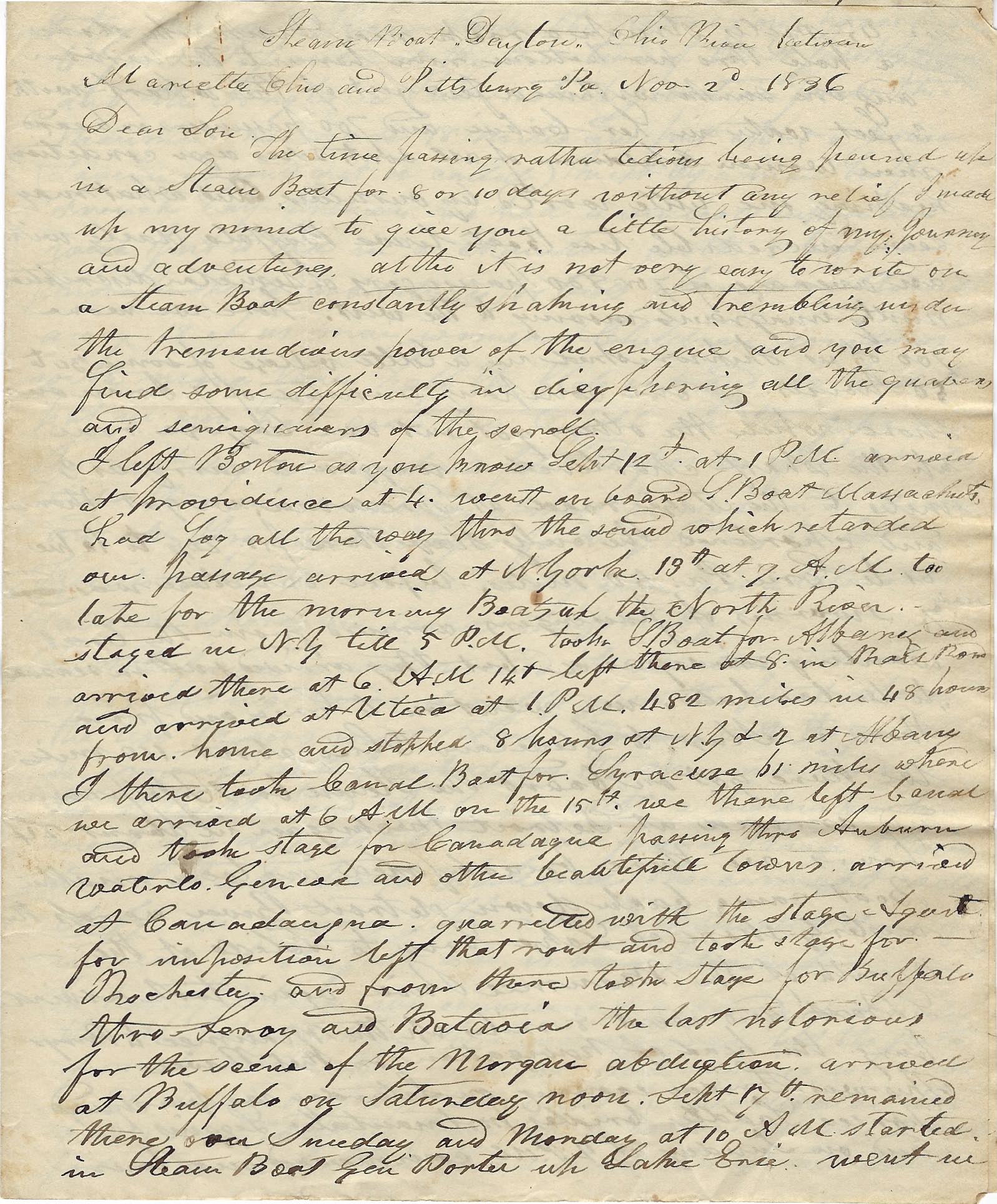
Among the Fay correspondence the Society is publishing for the first time ever this winter, we found a remarkable letter that chronicles the almost superhuman effort it took to travel by land before the railroad system linked the continent in the 1860s and 70s. Although not stated in the account, it seems fairly clear that Fay took on this arduous 1836 journey from Boston to St. Louis to act as a business agent, looking for profitable investment opportunities for wealthy Boston clients.
In this first installment, our hero Colonel Francis B. Fay, late of Southborough, finds himself ill-housed, ill-used, battered about, and eventually, submerged in Lake Erie….
On board the steamboat Dayton, on the Ohio River between Mariette Ohio and Pittsburgh
November 2nd 1836
Dear Lori,
The time passing rather tedious—being penned up in a steamboat for 8 or 10 days without any relief, I made up my mind to give you a little history of my journey and adventures, although it is not very easy to write on a steamboat constantly shaking and trembling under the tremendous power of the engine and you may find some difficulty in deciphering all the [illegible} of the scroll.
I left Boston, as you know, September 12 at 1 PM and arrived at Providence at 4. [Presumably by the brand-new Boston and Providence Railroad, just finished the year before]. Went on board steamboat Massachusetts, had fog all the way through the [Long Island] sound which retarded out passage, arrived at New York the 13th at 7 AM, too late for the morning boat up the North [Hudson] River. Stayed in New York till five PM, took a boat for Albany and arrived there 6 AM; left there and arrived at Utica at 1 PM. 482 miles in 48 hours from home, having stopped 8 hours in Utica and 2 in Albany.
[This was breath-taking speed for 1836 and would have been a thing of wonder. Compare this to daily sums later in the letter.]
I there took a canal boat for Syracuse—61 miles where we arrived at 6 AM on the 15th. We there left the canal and took stage for Canandaigua passing through Auburn, Waterloo, and Geneva, and other beautiful towns to arrive at Canandaigua. Quarreled the stage agent for imposition, [unclear what this means, though presumably a disagreement about the fare] left that route and took the stage for Rochester and from there took stage for Buffalo through Lenox and Batavia, the last notorious for the scene of the Morgan abduction.
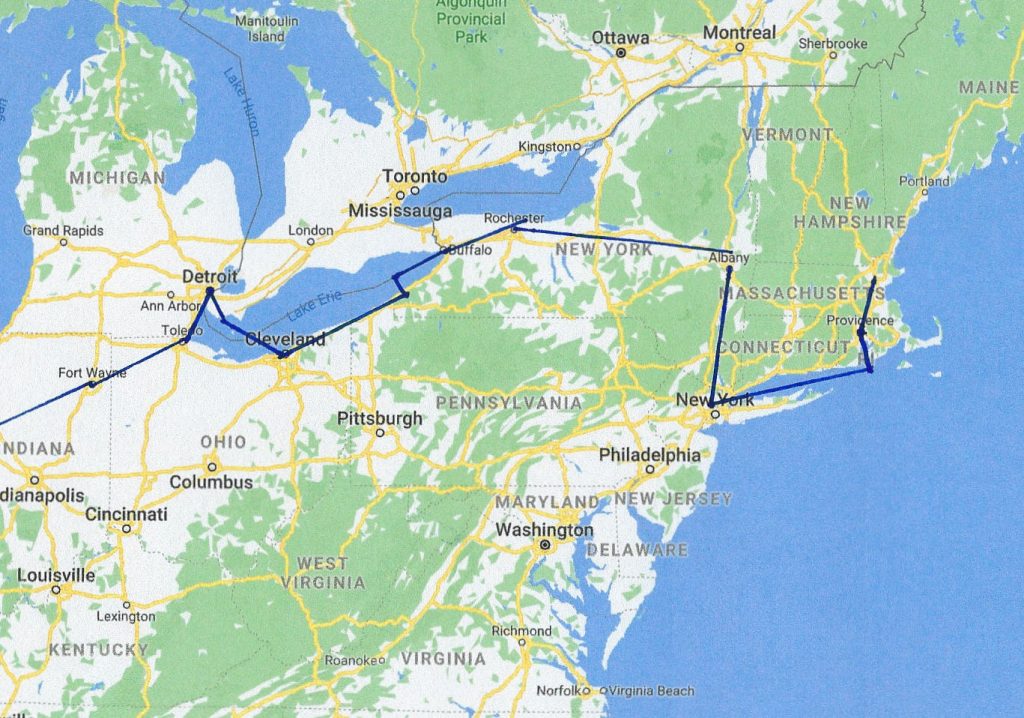
[Fay’s reference to the “Morgan abduction” refers to one William Morgan, a resident of Batavia, New York, whose disappearance and presumed murder in 1826 ignited a powerful movement against the Freemasons, a fraternal society that had become influential in the United States. After Morgan announced his intention to publish a book exposing Freemasonry’s secrets, he was arrested on trumped-up charges. He disappeared soon after, and was believed to have been kidnapped and killed by Masons from western New York. The allegations surrounding Morgan’s disappearance and presumed death sparked a public outcry.]
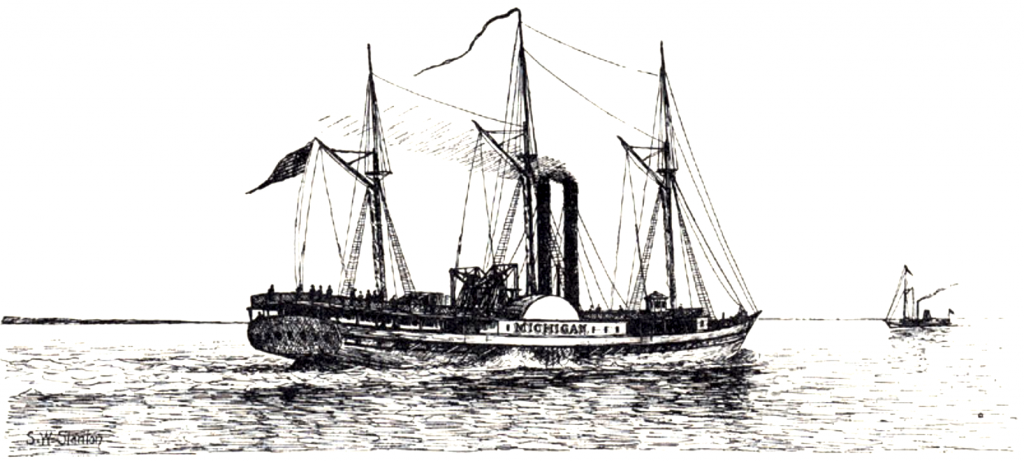
Arrived at Buffalo on Saturday noon Sept 17th and remained there over Sunday and Monday. At 10 AM started in the steamboat General Porter up Lake Erie. Went for 45 miles, [before we] struck a rock near Dunkirk and stove a hole through her bottom, ran her into the harbor where she sank a few feet from the wharf with 3 feet of water in her cabin, and 700 passengers on board, men, women and children of all sorts of sizes, ages, conditions making one little world by ourselves. What may seem incredible too is that boats leave daily from Buffalo with an average of 700 or 800 passengers, mostly immigrants moving to the west. Here we were—700 of us—shipwrecked in a little village of some 30 to 50 houses. Our company consisted of 7 men on shore while the others got out our baggage near up the wharf. [We] chartered a wagon to carry us 3 miles to the stage road at Fredonia. We got there and chartered the only stage there for $20 to take us to Erie PA—50 miles. Before our stage was ready, swarms of passengers arrived from the boat wanting conveyance but they arrived “just in season to be too late.” We went on to Erie and from there by stage to Cleveland Ohio, about 110 miles. We there got on board the steamboat Thomas Jefferson and arrived at Detroit Michigan in about 24 hours. We there breakfasted and took another boat, came back down the Detroit River across the westerly shore of Lake Erie to Toledo at the mouth of the Maumee River. Again took a steamboat and went 8 miles up the Maumee to Perrysburg, the head of navigation on that river. This was Friday evening.
On Saturday we purchased horses, saddles, bridles, portmanteaus, leggings etc and on Sunday at 2 PM commenced our tour up the Maumee River through the woods on horseback to Fort Defiance at the conjunction of the St. Josephs River and the Auglaize River, whose junction forms the Maumee. We made 18 miles and put up at a house (a tavern it could not be called) kept by a man, half-French, half-Indian. We had a comical supper and were put to bed in a chamber— 8 beds, or more properly, substitutes for beds, where we stowed away, 18 of us men women and children, windows with more than half the glass out, and we had to put in our hats and coats to fill in the gaps. The next day we reached Ft. Defiance after a 38 miles ride through mud & ravines almost perpendicular—down and up through mud sloughs, fording rivers, etc. etc.
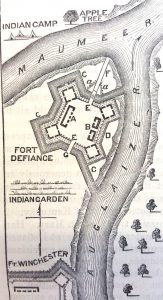
There is a little village at Defiance and a tolerable tavern where we fared comfortably. Fort Defiance is well named, it’s situation is most commanding being directly up the point where the two rivers meet, with the guns so arranged as to point down the Maumee and up the St. Joseph and Auglaize, with a high embankement and a deep ditch in the rear from river to river. I think troops stationed there might well defy an enemy. The village is situated directly in the rear of the fort and is very pleasant.
In leaving Ft. Defiance we commenced a journey of 50 miles through the forest where there was no road but for a path for man and horse through swamps [and] deep ravines. We would descend 50-75 feet almost perpendicular, the horses sometimes sliding from top to bottom unable to keep a foothold. At the bottom there were mud sloughs and water up to our horses bellies and immediately afterwards we would ascend almost perpendicular, obliged to hold onto the horses’ manes and let our horse keep prone step to step and with the greatest effort reach the top. The first night we put up at a log cabin of two rooms (about half a dozen of which were all the inhabitants there were between Ft Defiance and Ft Wayne—50 miles)
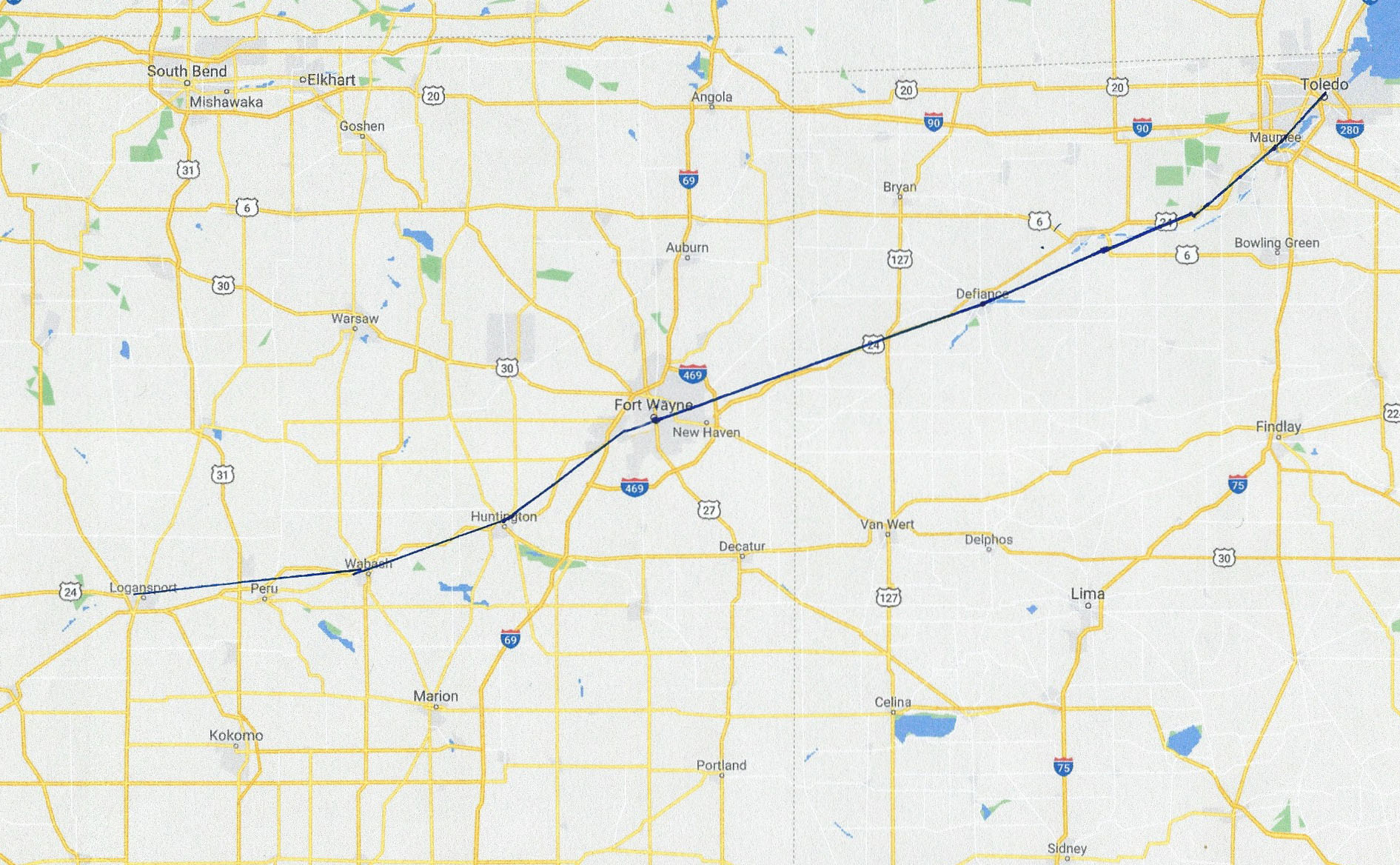
We had a supper I believe such as never before ate—meat that had been cooked some 8 or 10 times and fish which was not cooked without salt or butter. We were sent to bed under the roof (if roof it might be called) by a flight of stairs outside with no door and the logs so far apart that it appeared more of a cob house than a dwelling, stowed in with corn, oats, boxes, herbs, etc with 4 (what were called) beds. We stayed there till morning during a raging[?] night and had the same provision for breakfast and it was again set before 5 others travelers who came up just as we left.
The next day we passed Fort Wayne, a small little town, and commenced descending the Wabash River on a tow path of the Wabash Canal. That night we put up at a log house and had a splendid entertainment [the word here means “food and lodging”] as good as could be had in Boston. The next night we put up at another log house and fared comfortably. The owner was formerly from Massachusetts.
The next day we came to Logansport, a fine town in Indiana at the junction of the Wabash and Eel Rivers. In the meantime, I saw plenty of Indians and among them the head chief of the Miami Tribe who dresses and appears like a gentleman. He is said to be the richest man in Indiana, supposed to be worth $400,000. There was a collection of 11,000 Indians near Logansport to receive their pensions from government. But a quarrel ensued between them, and the whites and the militia [were] call out and two or three [Indians] killed before order was restored. We saw the troops just returning as we entered Logansport.
We left Logansport in the afternoon and went 6 miles to a small tavern on the banks of the Wabash and here my scene of troubles began….
TO BE CONTINUED….
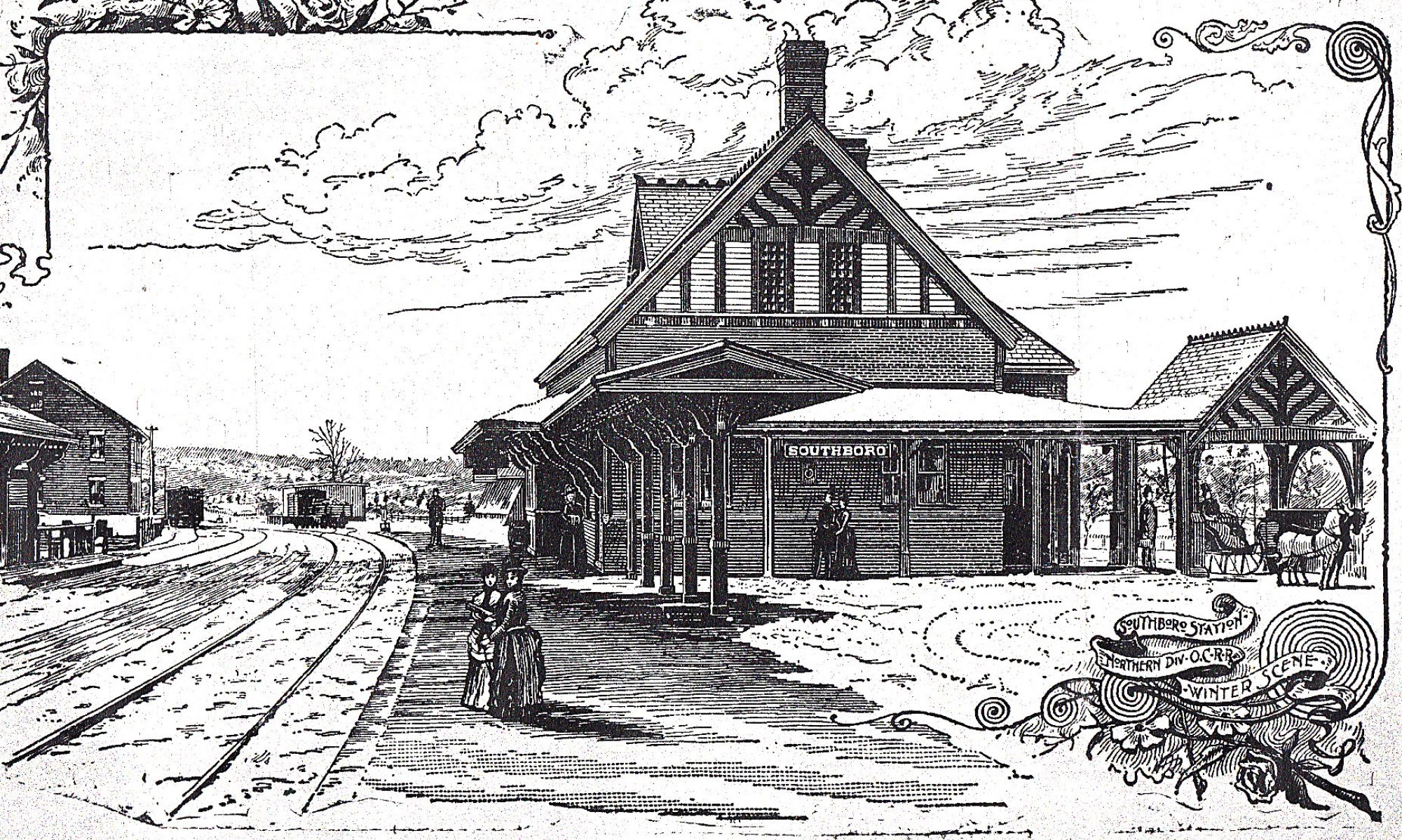
I forwarded this letter to my brothers in VT, CO, and Alaska and to my children in CT and NY. Thanks for sending it to members of the historical society. Very interesting! Maria Truslow
very interesting–the trains were certainly needed
And I, 160 years after Fay’s journey, in a Saab Turbo with a heated seat, at high speed, on a freezing winter day’s run from west of Joplin,, through St. Louis, Cleveland , Buffalo and Erie, to Rochester, 1,100 miles, all the while with hot coffee, burgers, fries, music with the volume cranked up ’til I reached a warm, cozy motel.
Allan, you always were the sporty, Saab type! I can see you at the wheel!